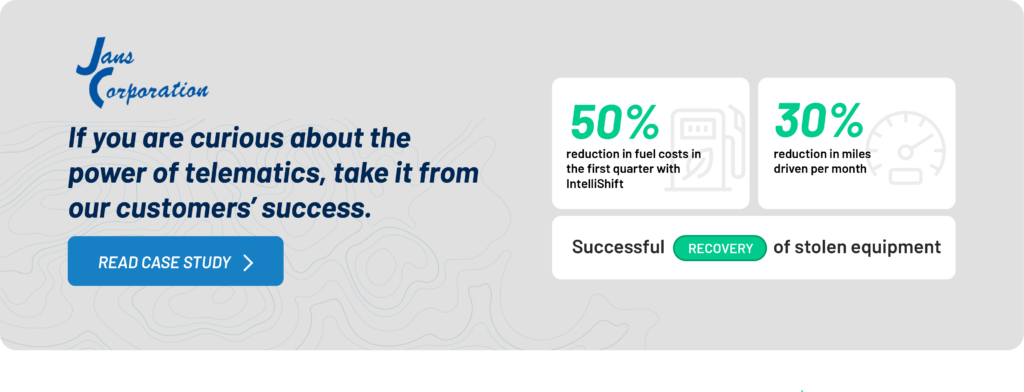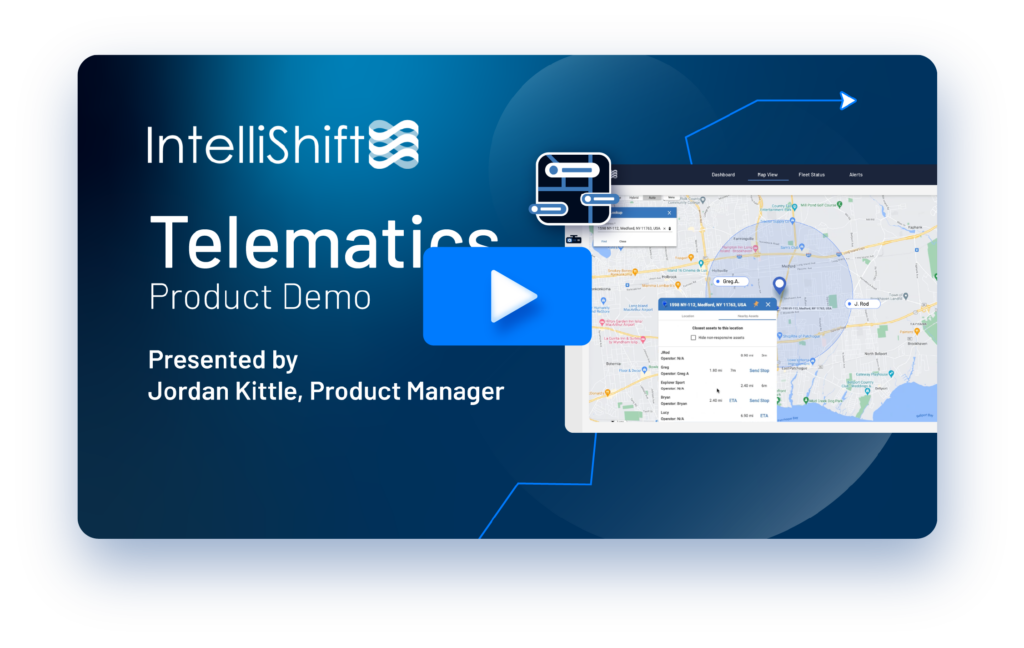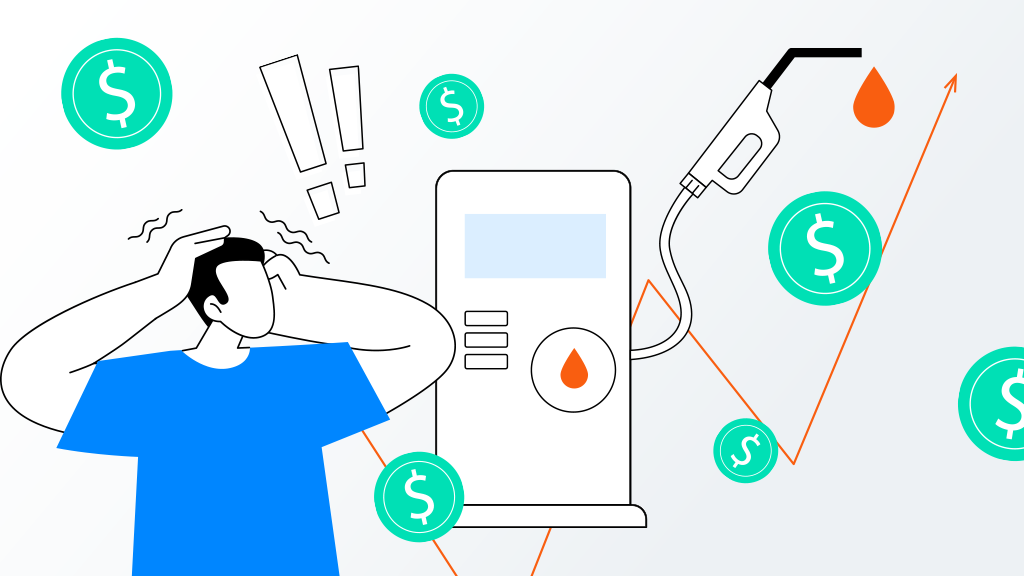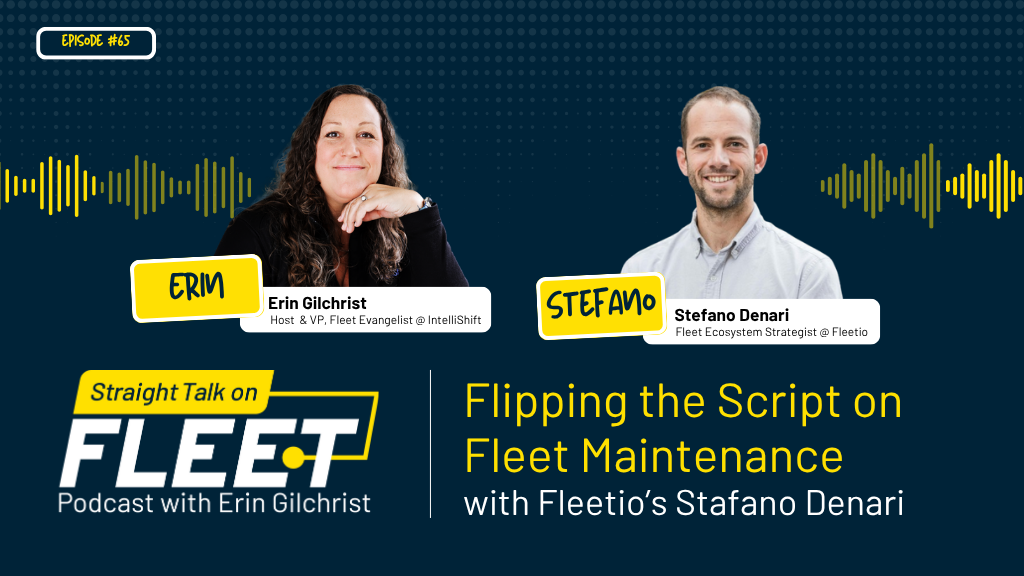What is Telematics?
When it comes to businesses who rely on commercial fleet vehicles, nothing is more important than streamlining methods of monitoring them. Today, companies monitor their fleet vehicles with the use of advances in technology such as telematics systems.
Although various forms of telematics have been around for years, many businesses still ask the question, what is telematics and how can they help? To answer this question, you first need to know what the word telematics means and how it works. Read on to learn more about fleet telematics.
Telematics Definition
Telematics, at the core, is the combination of two technological disciplines: telecommunications and computer processing programs. Together, these two sciences come together for one purpose which is to provide monitoring on service vehicles.
The term, telematics, refers to the ability of businesses to keep track of service vehicles. This is done to not only ensure that vehicles are where they need to be, but also measure other logistics, such as vehicle performance and fuel consumption, that help fleet managers.
In most cases telematics systems provide businesses with information about the efficiency, productivity, and health of their commercial fleets. Companies use this data to make faster decisions that boost the profitability and safety of their fleet management program.
How does Telematics Work?
Telematics devices, called Gateways, are placed in the fleet vehicle to record a variety of information. The device records various driving events such as speed, rapid acceleration, location, fuel consumption, and driver behavior. The data is transmitted over long distances through cellular networks and the cloud. The telematics servers and management software then decodes the information for analysts to create reports and glean insights.
How do Fleet Managers Use Telematics?
Along with the various driver behaviors, fleet managers are able to see if drivers are using cruise control or other vehicle features, such as plows, booms or reefer units. This can come in handy since studies show that drivers tend to use their phones more often when they are utilizing cruise control.
The device also tracks seatbelt habits, harsh braking incidents, open doors, and diagnostic information about the engine itself. The device transmits the information to the cloud through a cellular network.Once the information is in the cloud, it’s received through company servers and ends up in the fleet management software. It takes only seconds for the information to be transmitted.
From the information received, fleet analysts can then keep track of the drivers’ behaviors and the vehicle’s performance. They often use this to make changes to training and safety programs.
Businesses also use telematics to schedule regular maintenance on fleet vehicles. Since the device is connected to the vehicle’s computer system, it is easier to align various service checks that should be done periodically.
Fleet managers utilize the data provided to ensure drivers are taking the most efficient routes throughout the workday. This allows them to make adjustments to routes that result in better fuel consumption.
Additionally, an effective telematics system enables companies to train their drivers in more efficient ways. Studies show that creating training around best practices using vehicle telematics systems have been known to reduce instances of distracted driving.

What are Telematics Systems?
All of this sounds great of course, after all, what fleet manager doesn’t want to optimize the operation? But before you can install a telematics system you need to know exactly what one is.
A telematics system is the combined solution of the hardware installed on the vehicle that transmits the data, paired with a back office software platform which receives the data. The hardware device which goes into the vehicle, is sometimes called a black box, and is plugged directly into the OBD II or CAN-BUS port in the truck.
Within this black box are several different components which work together to collect data, such as a GPS tracking device to track location, accelerometer to track speed and a SIM card which enables the data to be transmitted through various means including satellite or cellular networks. The data then ends up on a server until it is decoded using software and put into report form.
An employee or fleet manager can then use different or additional software algorithms to analyze this data and put it to use in many different aspects of the company.
How are Telematics Devices Installed?
Depending on the commercial vehicle, telematics devices may come already installed in the engine. In most cases, this pertains to newer fleet vehicles since technology has advanced to allow for them to be pre-installed.
For vehicles that do not come with a telematic device installed, they can be added after market through various means. Many of these devices can be directly connected to the electrical system of the vehicle through available under-cab ports.
Since vehicle manufacturers have been installing OBD II ports in vehicles since the mid-1990s, it’s pretty simple to install a telematics device. These devices are usually small and can attach to the port located under the steering wheel of the vehicle.
Although some vehicles come with pre-installed OEM telematics, it is often beneficial for a trucking company to employ the use of a third party company. This way their selection of vehicles won’t be limited to those with the pre-installed telematics systems and all the data for the entire fleet can be logged in one central convenient software location for easier reference.
Additionally, since the use of telematics systems has become more common, technology has advanced to allow for more choices when it comes to telematics systems. Why be stuck with the basic equipment when you can upgrade to something with capabilities which are tailored to your fleet?
Some fleets, which choose to go with a third-party telematics provider, are using more and more of are weather alerts, dash cams, and ELDs, or Electronic Logging Devices. ELDs allow companies to be more compliant with regulations while they also collect their own data.
What’s the Difference between GPS Tracking and Telematics?
When it comes to discussions about various telematics systems and GPS technology, many people wonder if they are one and the same or different. The simple answer is that they are connected and are separate at the same time.
Most people use a GPS system on a daily basis to get from one place to another. This technology has existed since before the rise of the smartphone that includes the feature.
Whether you are going on vacation or are a commercial driver, you may have to use your GPS to find the exact location of where you want to go. This is especially true for those who drive commercial vehicles.
It is important to note that a telematics system uses GPS technology to gather information about the vehicle and driver. This information is then sent through the telematics system to give fleet management or other companies pertinent location details.
While the two terms are often used interchangeably, you should understand that GPS is just one component of many that telematics systems use to monitor vehicle performance.

What are the Benefits of Fleet Telematics Systems?
Fleet managers benefit from fleet telematics systems in a variety of ways. These benefits can help to improve the efficiency and effectiveness of operations.
The following are the most common benefits of fleet telematics system:
Increased Productivity
Since vehicle telematics systems transmit real-time data, drivers and fleet managers use them to make fast decisions to boost productivity and get more done.. For example, the telematics system makes drivers and managers aware of local traffic conditions and ETAs, so they can take optimized routes or dispatch a different vehicle to the job.
Additionally, fleet managers can ensure that customer satisfaction is increased since they can dispatch the closest vehicles to various locations. This can be done since they have real-time access to GPS locations and safest routes.
Safety Improvements
Since vehicle telematics systems transmit real-time data, drivers and fleet managers use them to make fast decisions to boost productivity and get more done.. For example, the telematics system makes drivers and managers aware of local traffic conditions and ETAs, so they can take optimized routes or dispatch a different vehicle to the job.
Additionally, fleet managers can ensure that customer satisfaction is increased since they can dispatch the closest vehicles to various locations. This can be done since they have real-time access to GPS locations and safest routes.
Fuel Consumption Cost Savings
Fuel consumption is typically one of the largest expenses for fleets due to various factors including the way drivers behave on the road. Drivers who speed excessively or idle for longer periods of time tend to burn more fuel, which ends up costing the fleet company more money.
Using a telematics system that also has a fuel management solution can be a helpful way for fleet managers to reduce costs for companies. Fuel card integrations also provide useful context to how your fleet is purchasing gas. Fleet managers use telematics to identify fuel slippage, or times when fuel was purchased without a company vehicle nearby.
Engine Diagnostics and Maintenance
The telematics device is often connected to the diagnostics port of the vehicle. The gateway interprets the Diagnostic Trouble Codes that fire when something malfunctions in the engine or vehicle. This transmits data on maintenance issues immediately. Allowing fleet managers to schedule service before a bigger problem occurs.
When managers are able to automatically track maintenance issues, they can prevent catastrophic failures and more effectively plan and schedule preventative maintenance. This means that in the long run, this will save the company quite a bit of money on more complicated repairs and vehicle downtime.
ELD Compliance
When it comes to ELD compliance, telematics systems make it easier for fleets to meet certain regulatory requirements. Since the telematics device records data that is required to be submitted such as drive times, and records of duty status reports, these devices make it easy to be sure your employees are receiving the rest they need, even when they are away from base for days at a time.
Fleet management can use the data stored in the fleet management software for easy digital IFTA reporting, as well as keeping track of vehicle inspections. Using this information to take care of ELD compliance helps companies ensure they are staying on top of things.
A company without telematics devices will need to use paper and pencil to keep track of their service logs. Not only is this not always reliable, but it can make it difficult to track down information if a company is ever asked or audited for this information.
Location Visibility
The GPS tracking system that is a part of the telematics system can help fleet managers keep track of where their vehicles are at all times. The advantage to this is that the data can be monitored to ensure the most efficient routes are taken and that drivers and assets are where they should be. When combined with utilization data from vehicles and assets, managers can deploy underutilized assets to where they’ll be better used. This insight helps fleets avoid unnecessary purchases and rentals.
This can also be helpful when a vehicle or piece of equipment is lost or stolen since the data is transmitted in real time.Fleet managers can locate the fleet vehicle within seconds and report it to the proper authorities.
Improvement in Communication
Before telematics systems came onto the market for fleet management, drivers were subjected to filling out quite a bit of paperwork. While this was helpful to managers, it was not until after the fact that this information was able to be viewed.
With the existence of fleet telematics, communication between fleet managers and drivers can be automatic in most cases. With the ability to have the data transmitted immediately, fleet companies have the ability to take care of issues even before the driver has returned from their route.
Improved Payroll Management
Since telematics data is transmitted in real time through the device, fleet managers are able to see when a driver started their route and when they finished. This allows for a more accurate record for payroll purposes.
Instead of a driver needing to clock in and out and managers matching those time cards with the other records, the data provides the details for them. This can eliminate inaccuracies when it comes to paying drivers.
Integration With Other Software
The great thing about a telematics system is that some solutions provide the ability to integrate with other systems that a company may use. This means an even more streamlined process of keeping track of fleets.
Some possible integrations include CRM systems that many companies use to stay up-to-date with customers and even employees. The ability to integrate with dash cameras or other onboard camera systems make it easier for companies to have everything in one place.
Are Telematics Solutions Expensive?
Depending on the telematics solutions your company chooses to go with, they can range between expensive and fairly cheap. This means that like most technology, what solutions company and products you choose your price will vary.
In some cases, fleet businesses choose to go with the bare minimum which, while relatively inexpensive, may not be what is needed in the long run. When this happens, they end up paying more to upgrade their system.
Most telematics solutions have many bells and whistles that you can add to them for further data. Some of these include dash cams, ELDs, and other accessories that may drive up the price, but can be worthwhile down the road.
For accessories such as dash cameras, there are a wide variety of models available depending on what your company chooses to spend and how much coverage it has. Selecting the best dash camera can make all the difference when it comes to safety and monitoring driver behavior.

The Future of Telematics Systems and Fleet Management
As technology advances and more and more fleet companies become aware of the need to reduce or control costs, telematics systems will become the primary way to do that. Various telematics companies know this and will find ways to make this technology more beneficial.
At IntelliShift, the SP Telematics solution integrates the ability to track data through telematics systems with dash cams that are equipped with AI technology. This enables fleet managers to streamline the process of receiving telematics data and dash cam data in one place.
IntelliShift provides a state of the art telematics system designed to help fleet managers make smarter optimization and safety decisions. What makes it a unique solution is that it is equipped with AI dash cams that give managers even more visibility into vehicle and driver performance. If you are searching for a telematics solution that is one-of-a-kind and provides everything you need in one platform, look no further than SP Telematics.




![Episode 50 Thumbnail Erin celebrates building the fleet community with 50 episodes and 11K followers on LinkedIn [Podcast]](https://intellishift.com/wp-content/uploads/2022/03/WhatisFleetTelematics-Cover.jpg)



